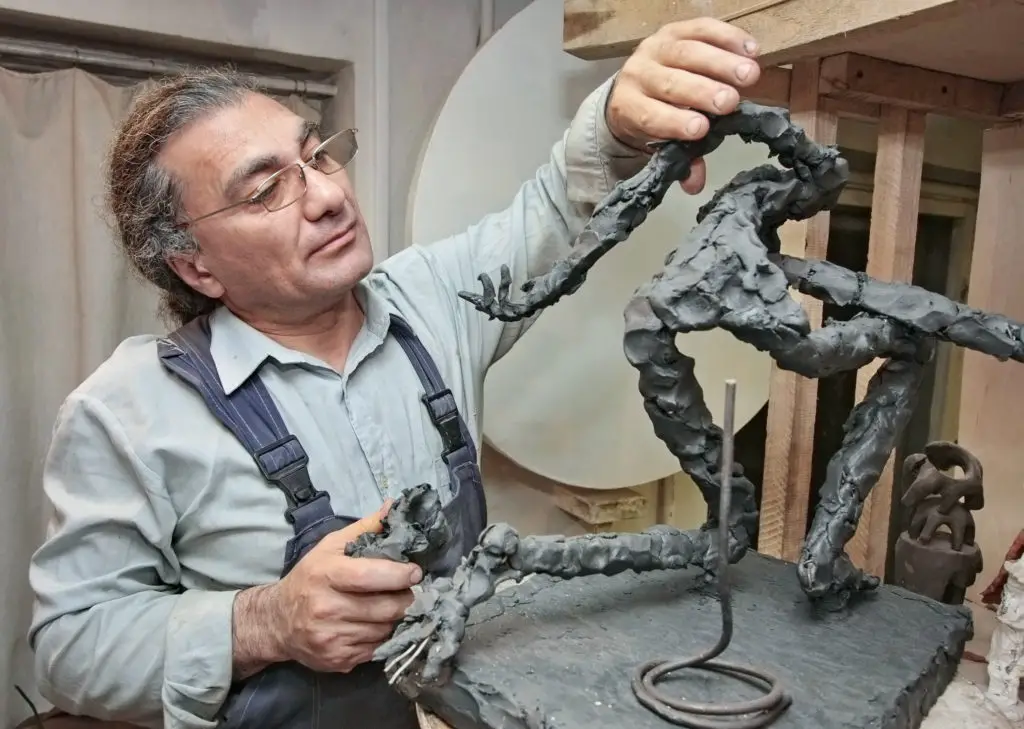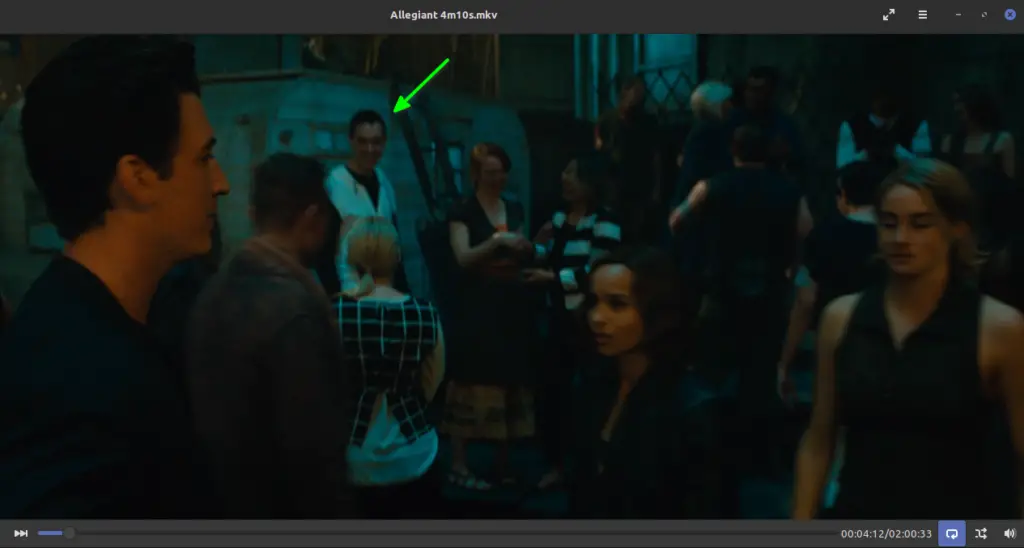Artists are often perceived as struggling professionals, and people believe we can’t really make any money unless we’re really famous. And our work is rarely seen as having the potential to be a regular “day job.” This begs the question, “are artists rich?” We look at three categories of professionals and what they can earn.
In general terms, artists are not rich but can become rich when their work gains popularity. Creatives in modernized media like movies and music earn more than the traditional arts like painting and writing. Some creative work like designers and sales copywriters command higher salaries.
So if you’re looking to launch a career through your passion for the arts, you can find out what you can expect to earn in the visual, audio, and written arts. Armed with this knowledge, you can fight back against the stereotype of being a “struggling artist.” We took a look at PayScale’s average salaries to find out what your earning potential is (figures vary according to qualifications and experience).

Visual Arts
The Visual Arts are what typically springs to mind immediately when thinking about the art world. Professionals in the visual arts range from fine artists (painters, sculptors, etc.) to performers and artists in more commercialized fields like graphic designers and interior decorators.
Painters, Illustrators, Tattoos ($32,000 – $305,000 p.a.)
Painters typically opt to produce more aesthetically pleasing art pieces that are sold to either galleries or art collectors. Unknown artists who haven’t developed a network of clients or brokers can struggle to sell their art. But with the right amount of experience and genuine talent, some artists can make a great living.
The highest-tier creatives often attract wealthy benefactors who consistently buy their work and provide some stability. These repeat collectors often invest their money into art as a store of value. An artist with a large following in the fine art market can become rich.
On the other hand, most illustrators provide a more commercialized service intended for mass consumption. You’ll find these artists creating
- logos for media companies
- illustrations for books or video production, or even
- infographics for online publishers
Unlike other forms of contemporary art, tattoo artists are generally paid a salary. They earn as little as $22,000 per annum without any experience in the field. With more experience, your own studio, and a wealthy client base, however, you can make more than $300,000.
As with most careers we’re discussing, the highest earners will always make a lot of money. But, unfortunately, these are often the rare outlying famous artists.
Sculptors, Glass Blowers, & Potters ($24,000 – $104,000)
Sculptors, glassblowers, and potters also fall into the visual fine art category typically seeking out galleries, museums, and collectors to fetch a high price for their art. The better the art, the better your reputation, the more you can get for your creations.
Sadly, with most visual arts, the highest prices for the works are usually fetched in the secondary auction markets. Naturally, talented artists whose art balloons in value along with their fame will find their new creations easier to sell than an emerging artist…following the stereotypical tale of the starving artist.
Dancers ($31,997 – $39,843)
Dancers are the outliers on the low end of earning potential on this list. Unfortunately, dancing is one of those careers where an artist is just not going to make that much no matter how they cut it.
Sadly, dancers go primarily unnoticed if working in music videos, for example, because they tend not to be the focal point of the entertainment.
Interior Designers & Architects ($37,000 – $71,000)
Architects and interior designers are closely tied to the housing market, which is about as stable an industry as you get.
Many interior designers are well-paid from day one. Still, with more experience and notoriety in this form of artwork, the higher the earning potential.
Architects usually require more formal education. They can do significantly better than interior designers due to the size and scope of the projects. The highest-paid of this type of artist is actually those that own their own architecture business and have their loyal, commercial clientele.
Video, Movie, & TV Actors & Performers ($19,000-$194,000)
This category of artist is genuinely a wildcard. We all know movie stars can make astronomical sums of money… but getting “discovered” is about as likely as being struck by lightning. Most actors struggle, and even a gig as an extra or background actor can feel like a blessing sometimes.
Side Note:
I enjoy being on movie sets. As the artistry of the medium is being developed, I get to be a part of it. 
This is me on the final cut of Allegiant. The practical effects created on this sound stage here in Georgia were astounding!
Practical & Special Effects ($39,000 – $144,000)
Depending on the production crew, working as a creative in special effects can be a high-paying job.
Post-production on movies can take an incredibly long time. Sadly, there is not much of a freelancing option, and you have to commit to whatever work you get for up to an entire year. And the discrepancy between the special effects teams of Sharknado and those working on The Avengers is obviously quite substantial.
Audio Arts
Audio arts are the broader category containing musicians, singers, composers, and songwriters. Even sound engineers, the guys who add those subtle tones and effects, are artists in their own right and can be well-paying careers.
Singers & Voice Actors ($30,000 – $213,000)
Yet another “go big or go home” career, you can be a chart-topping pop star or begging local bar owners to let you play a set on Saturday evening.
Voice actors might get to do a voiceover for a TV series or an advertisement or play timeless roles like in a cartoon series. But, unlike live-action actors, aging doesn’t affect the course of their careers because they aren’t on screen.
Songwriters & Composers ($29,000 – $124,000)
Songwriters and composers can either go the route of a struggling/superstar musician or use their talents or work behind the scenes creating original scores for film and television. These creative individuals can also work with advertisers to make jingles or join already successful music artists and help them produce better work.
Instrumentalists ($10-$73 per hour)
Instrumentalists can fall into the category of band members in the singer/songwriter category. Alternatively, they also have the (likely far more fruitful) opportunity to freelance and take on regular gigs.
These kinds of gigs include playing at weddings, creating backing tracks for everything from musical records to radio specials.
Depending on the skill, the instrument, demand, and your level of experience, you could earn very little but make a big enough name for yourself, and it becomes quite the opposite.
Written Arts
This category is a bit of a wildcard and quite personal to me as a writer. Writing can be highly commercialized, but it often comes at the cost of writing about one’s passions. Technical writing, copywriting, and regular reporting for news publications are highly rigid and less creative. So, we writers frequently opt-out of being artists (creative beings, using pens instead of paintbrushes and newsprint instead of canvases) to favor a steady income.

Book Authors ($22,000 – $102,000)
Your income as an author largely depends on your publisher or the platform you’re using when self-publishing. Authors have to get very lucky to write a best-seller. The vast majority of even published writers go unnoticed. But, things are changing in the digital age.
Some creatives can be wildly successful simply doing their own publishing by selling e-books. However, in the internet age, digital publishing companies are still part of the equation.
For example, authors selling their works through Amazon receive only 65-70% of each sale. An author who sells 10,000 copies of their latest book for $5 will gross $50,000 for their self-published effort. But they’ll take home only about $25,000. Fees, commissions, distribution, and taxes will consume much of their profit potential.
If you can secure a bona fide book deal with a large publisher, you will get paid a stipend for the amount of time it takes to write your book, but you’ll receive even a smaller cut of the sales. That could be a favorable option, though, knowing that big publishing houses can reach far more people than you would on your own. Moreover, if authors use the right resources and have the know-how, they can do well…but only a few authors become rich.
Poets ($33,000 – $76,000)
Poetry today is nothing even remotely similar to what it was in the 19th Century, for example. Poets are no longer revered figures like Shakespeare or Sylvia Plath. So it’s a tricky question to answer… Many people find themselves whether there is a place for poetry in today’s society.
This segment of written art is considered somewhat outdated. Most creatives with poetic flair will opt to become songwriters or channel their energy into other forms of the written word.
Newspapers don’t publish poetry on their pages as they used to in the past. So you’d be hardpressed to find a book review on poetry collections either, even though this was reasonably commonplace as little as fifty years ago.
Modern readers lack general interest in poetry. However, some poets still get published and can earn a stipend from publishers and commissions on their works that sell if they’re fortunate.
Alternatively, many poets go into specialized in academia perhaps teaching art history. On rare occasions, you may use your skills for something different, like songwriting.
Sales Copywriters ($38,000 – $76,000)
Copywriting isn’t generally considered an art by many because of the established writing formulas. But within the structured format exists room for creative license in terms of content (wordsmithing is an art on its own).
Copywriting is a promising, stable career that takes a lot of skill and hard work. With the advertising industry increasing its size in a digital era, skilled sales copywriters can command decent salaries. The earning potential may not be as astronomical as a movie star or a successful musician, but the chances of getting to the highest income bracket are far higher.
Art (or any niche) Blog Writers($21,000 -$53,000)
Blog writing is not exactly a glamorous field by any stretch of the imagination 😁 . However, it is still rewarding and leaves a lot of room to write about your passions.
Depending on how much work you put in, the money is suitable as a side hustle. On the other hand, writing for a niche site may produce a middle-class lifestyle if you become really skilled or own a blog.
But what is truly wonderful about my line of work is that it gives me room to be an amateur artist and share my knowledge.
And if you’re a “struggling artist,” developing writing skills is a solid fallback career.



